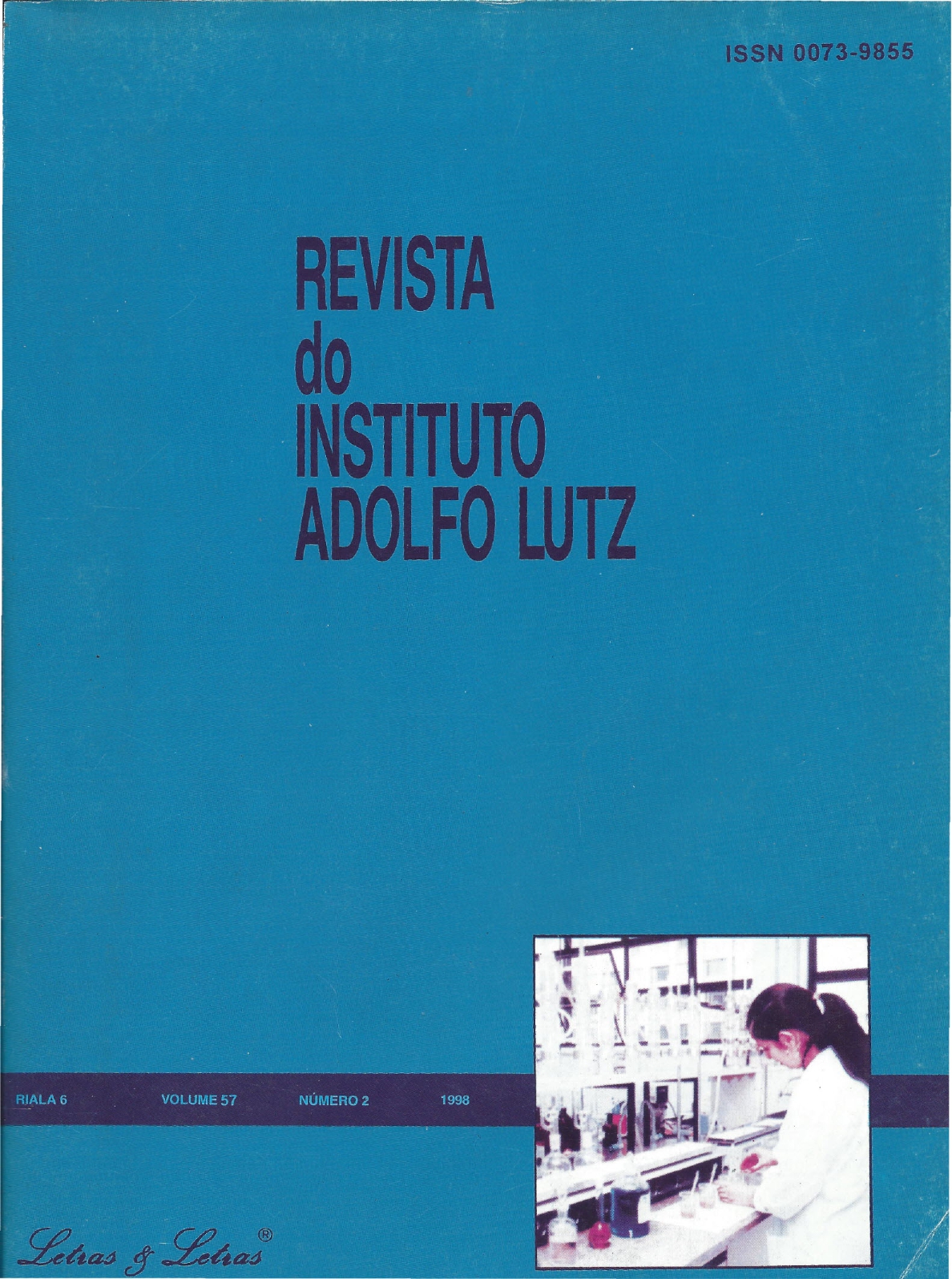Abstract
Cell lines obtained from Aedes albopictus mosquitoes larvae has been shown to be naturally infected by viruses. The C6/36 clone of Aedes albopictus cells obtained by Igarashi in 1978 showed to be free of viruses and has been used to isolate Dengue viruses in the majority of specialized laboratories. In our studies with these cells, we detected the presence of an endogenous virus, after different periods of incubation. Eletromicroscopic analysis of the culture fluid of C6/36 cell, by negative staining, revealed the presence of a non-enveloped viral particle, from the 12th day of splitting, measuring 20nm. Analysis on days 2, 6, and 10 after the day of splitting the ceIls were not able to show the same type of viral particle. These celIs were submitted to indirect immunofluorescence test using a paneI of antisera directed to several arbovirus groups. These tests were negative, ruling out the possibility of laboratory contamination. The presence of endogenous viruses in established celllines may occur in any laboratory without being detected. Our work showed that this endogenous virus does not influence the isolation of Dengue viruses and the ceIl replication. Due to the lack of data, the use of these ceIls to isolation of other viruses should be carefuIIy evaluated.
References
2. BRENNER, S. & HORNE, R.W. A negative staining method for high resolution electron microscopy of viruses. Biochim. Biophys. Acta, 34: 103-110,1959.
3. CUNNINGHAM, A.,.WEBB, S.R., BUCKLEY, S.M. & CASALS, J. - Isolation of Chikungunya virus contaminating an Aedes albopicuts cellline. J. Gen. Virol. 27: 97-100, 1975.
4. IGARASHI, A. - Isolation of a SinghÕs Aedes albopictus cellline cone sensitive to dengue and chikungunya virus. J. Gen. Virol. 40: 531-544, 1978.
5. JOUSSET, F-X.; BARREAU, C.; BOUBLIK, Y. & CORNET, M. - A parvo-like virus persistently infecting a C6/36 clone of Aedes albopictus mosquito cellline and pathogenic for Aedes aegypti larvae. Virus Res. 29: 99-114, 1993
6. HIRUMI, H., HIRUMI, K., SPEYER, G., YUNKER, C.E.,THOMAS, L. A. , CORY, J. & SWEET, B.H.- Viral contamination of a mosquito cell line, Aedes albopictus associated with syncytium formation. In vitro 12: 83-97, 1976.
7. SINGH, K.R.P. - Cell cultures derived from larvae of Aedes albopictus (Skuse) and Aedes aegypti (L.), Current Science 36: 506-5-8, 1967.
8. SINGH, K.R.P. & PAUL, S.D.- Isolation of dengue viruses in Aedes albopictus cell cultures. BulI. W.H.O. 4: 982-983,1960.

This work is licensed under a Creative Commons Attribution 4.0 International License.
Copyright (c) 1998 Instituto Adolfo Lutz Journal
